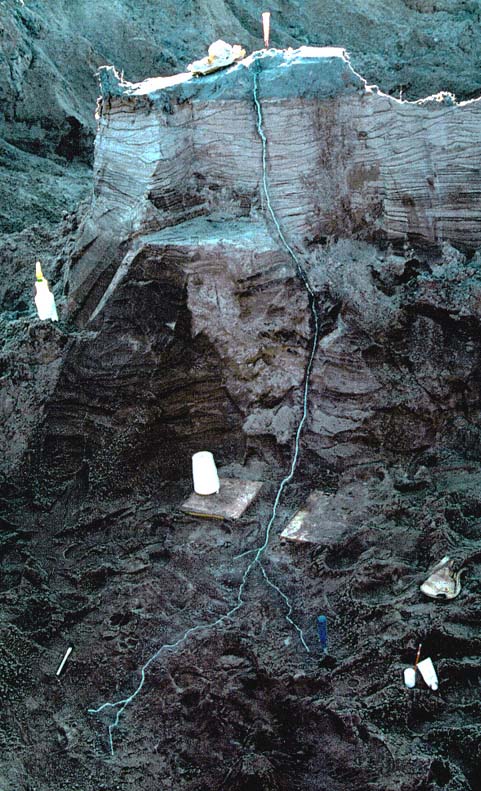
I've been collecting images of fulgurites - here's the best one I could find.
Posted on 03/10/2007 8:23:29 AM PST by aculeus
When lightning strikes sand or soil, it melts and fuses grains into features that some have called petrified lightning bolts. Their scientific name is fulgurites, after fulgur, the Latin word for lightning.
Fulgurites are branched, thin, hollow tubes usually 1 or 2 inches in diameter and a few feet to tens of feet long. They are rough on the outside (where sand grains and other material stick to the molten material) but glassy smooth on the inside, with many bubble holes produced by vaporized gases.
They usually are considered mere curiosities, but a recent bit of research reported in the Feb-
issue of the journal Geology put fulgurites to a scientific use, to obtain 15,000-year-old climate data.
About 65 lightning flashes occur per second worldwide, but lightning is not randomly distributed — some areas get more than others.
One area that sees few storms is the Libyan Desert in southwestern Egypt. Lightning does occur to the north, around the Mediterranean, and to the south, in a region called the Sahel.
Fulgurites found in the Libyan desert suggest that storms were more common there in the past. Analyses of gas bubbles from one of the glassy tubes confirmed it.
The main gases found were carbon dioxide, carbon monoxide and nitric oxide. There also were traces of oxygen, methane, argon and others.
For a time, the source of the gases was unclear — they could have come from either the atmosphere or from the ground. Low amounts of argon showed they probably came from vaporized organic material in the soil; if the gases were from the atmosphere, the amount of argon should have been hundreds of times greater.
Further analyses of gases indicated a much different climate than occurs there today. Rainfall was typical of the Sahel, about 370 miles south, and the ratio of carbon-12 to carbon-13 indicated that what is now desert was covered by grasses and low shrubs.
The fulgurites were dated by a technique called thermoluminescence dating. Radiation from both the ground and from space (cosmic rays) produces changes in the crystal structure of quartz grains that accumulate with time.
When carefully heated, the crystal structure returns to normal, but as it does, it gives off light. The longer the grains were radiated, the more light was given off.
Measurements taken at two different wavelengths — ultraviolet and blue — gave close ages. Both indicated the fulgurites formed 15,000 years ago.
Dale Gnidovec is curator of the Orton Geological Museum at Ohio State University.
gnidovec@geology.ohio-state.edu
Copyright © 2007, The Columbus Dispatch
My husband is a geologist. He said they used to see these in the Rockies on the granites, wherever lightning had struck.

I've been collecting images of fulgurites - here's the best one I could find.
Great pic!
 |
||
| · join · view topics · view or post blog · bookmark · post new topic · subscribe · | ||
That is a freaking and stunning image. Thanks for posting.
Disclaimer: Opinions posted on Free Republic are those of the individual posters and do not necessarily represent the opinion of Free Republic or its management. All materials posted herein are protected by copyright law and the exemption for fair use of copyrighted works.